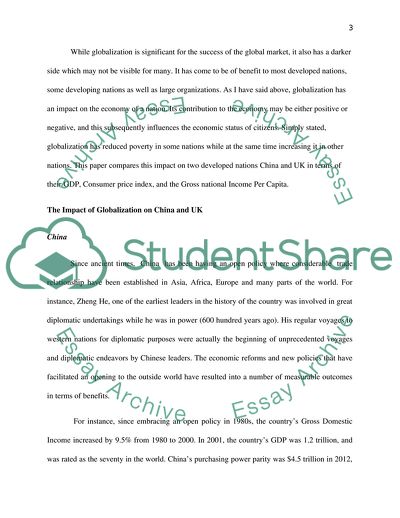Cite this document
(Relationship between Globalization and Poverty Report Example | Topics and Well Written Essays - 3500 words, n.d.)
Relationship between Globalization and Poverty Report Example | Topics and Well Written Essays - 3500 words. https://studentshare.org/sociology/1813690-by-comparing-china-and-uk-with-gdp-gdp-growth-annual-consumer-price-index-consumer-price-index-growth-annual-and-gross-national-income-per-capita-by-atlas-method-current-us-in-thousandsand-linked-with-globalisation-and-poverty
Relationship between Globalization and Poverty Report Example | Topics and Well Written Essays - 3500 words. https://studentshare.org/sociology/1813690-by-comparing-china-and-uk-with-gdp-gdp-growth-annual-consumer-price-index-consumer-price-index-growth-annual-and-gross-national-income-per-capita-by-atlas-method-current-us-in-thousandsand-linked-with-globalisation-and-poverty
(Relationship Between Globalization and Poverty Report Example | Topics and Well Written Essays - 3500 Words)
Relationship Between Globalization and Poverty Report Example | Topics and Well Written Essays - 3500 Words. https://studentshare.org/sociology/1813690-by-comparing-china-and-uk-with-gdp-gdp-growth-annual-consumer-price-index-consumer-price-index-growth-annual-and-gross-national-income-per-capita-by-atlas-method-current-us-in-thousandsand-linked-with-globalisation-and-poverty.
Relationship Between Globalization and Poverty Report Example | Topics and Well Written Essays - 3500 Words. https://studentshare.org/sociology/1813690-by-comparing-china-and-uk-with-gdp-gdp-growth-annual-consumer-price-index-consumer-price-index-growth-annual-and-gross-national-income-per-capita-by-atlas-method-current-us-in-thousandsand-linked-with-globalisation-and-poverty.
“Relationship Between Globalization and Poverty Report Example | Topics and Well Written Essays - 3500 Words”. https://studentshare.org/sociology/1813690-by-comparing-china-and-uk-with-gdp-gdp-growth-annual-consumer-price-index-consumer-price-index-growth-annual-and-gross-national-income-per-capita-by-atlas-method-current-us-in-thousandsand-linked-with-globalisation-and-poverty.


